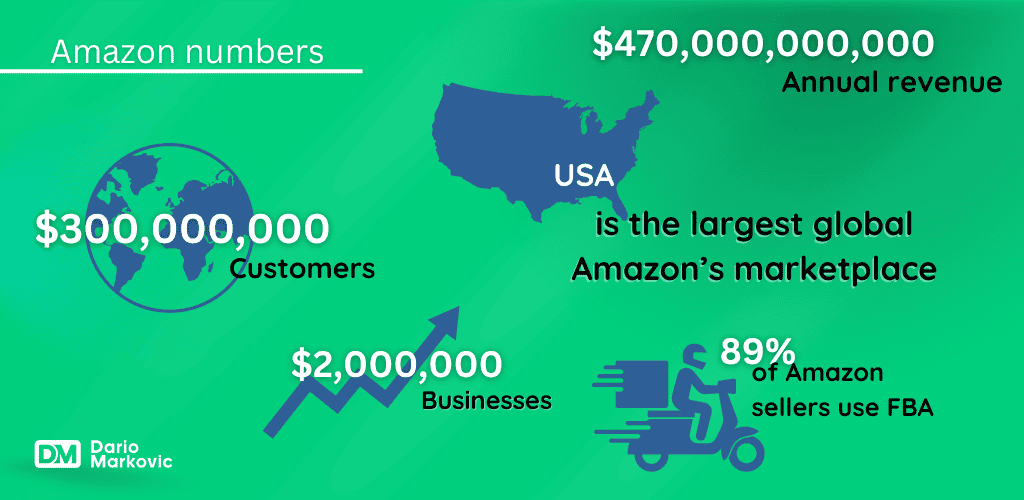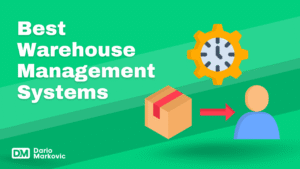Have you ever wondered which fulfillment method reigns supreme in the e-commerce world? Time to choose: Amazon FBA vs. Dropshipping. If you’re struggling to decide, you’re not alone. The path to e-commerce success can be daunting, and choosing the right fulfillment strategy is one of the most critical steps.
Let’s dive into the details of these two popular methods to help you make an informed decision.
As an expert in the field, I’ve experienced firsthand the advantages and pitfalls of both Amazon FBA and Dropshipping. Read on, and I’ll guide you through everything you need to know to pick the best option for your business.
Amazon vs Dropshipping: What Are the Best Fulfillment Methods?
Regarding e-commerce fulfillment, it really comes down to: Amazon FBA vs Dropshipping. Each has unique benefits and drawbacks, so understanding them is crucial to success. Let’s break it down.
1. Amazon FBA
Amazon FBA (Fulfillment by Amazon) allows sellers to store their products in Amazon’s fulfillment centers. Amazon handles storage, packaging, and shipping, making it a hassle-free option for many sellers.
Key Benefits
- Prime Eligibility: Access to Amazon Prime customers.
- Customer Service: Amazon handles returns and customer service.
- Scalability: Easily scale your business with Amazon’s infrastructure.
Pricing
Amazon FBA has various fees, including storage and fulfillment fees. Prices can add up, so factoring these into your profit margins is essential.
Pros & Cons
Pros:
- High scalability
- Trusted Amazon brand
- Fast shipping
Cons:
- High upfront costs
- Less control over inventory
- Fees can eat into profits

2. Dropshipping
Dropshipping allows you to sell products without holding inventory. Instead, when a customer orders, you purchase the item from a third-party supplier who ships it directly to the customer.
Pros & Cons
Pros:
- Low upfront costs
- High flexibility
- No inventory management
Cons:
- Lower profit margins
- Reliance on suppliers
- Potential for longer shipping times
What Is Amazon FBA vs. Dropshipping?
Amazon FBA involves storing your products in Amazon’s warehouses, where they handle fulfillment. In contrast, dropshipping means you don’t hold inventory; you rely on suppliers to ship products directly to your customers.
How Can Amazon FBA vs. Dropshipping Benefit You?
Choosing between Amazon FBA and dropshipping depends on your business goals. Amazon FBA offers scalability and Prime benefits but comes with higher costs. Dropshipping provides flexibility and low startup costs but may result in lower profit margins.
Buyers Guide: How We Conducted Our Research
When doing our research to find the best fulfillment method, we determined using these factors:
- Pricing: Analyzed the costs associated with each method.
- Features: Compare the key benefits of Amazon FBA and dropshipping.
- Negatives: Identified the drawbacks of each technique.
- Support or Refund: Evaluated the available support and refund policies.
Dario's Key Takeaways About Amazon FBA vs. Dropshipping
After exploring both Amazon FBA and dropshipping in-depth, it’s clear that each fulfillment method offers unique advantages and challenges. Here are my key takeaways to help you make an informed decision:
- Startup Costs and Investment:
- Amazon FBA requires a higher upfront investment due to inventory purchases, storage fees, and fulfillment fees. This method is suitable if you have the capital to invest and want to leverage Amazon’s vast logistics network.
- Dropshipping is ideal for those with limited startup funds. You don’t need to buy inventory upfront; you only pay for products when a customer orders. This reduces financial risk, making it a good option for beginners.
- Inventory Management:
- Amazon FBA: Amazon manages inventory storage, packaging, and shipping. This hands-off approach allows you to focus on other aspects of your business, but it comes with the trade-off of less control over the fulfillment process.
- Dropshipping: You don’t hold inventory, which means you won’t have to worry about storage or unsold stock. However, managing multiple suppliers and ensuring they fulfill orders promptly can be challenging.
- Shipping and Customer Service:
- Amazon FBA: Offers fast, reliable shipping, especially for Prime members. Amazon also handles customer service and returns, which can enhance customer satisfaction.
- Dropshipping: Shipping times can vary significantly depending on the supplier’s location, potentially leading to longer delivery times. Customer service and returns are your responsibility, requiring good supplier communication and management skills.
- Scalability:
- Amazon FBA: Amazon’s extensive logistics network makes it highly scalable. As your sales grow, Amazon can handle increased order volume without additional effort on your part.
- Dropshipping: Scalability is possible but may require more effort to manage multiple suppliers, ensure product quality, and handle increased customer inquiries.
- Control and Flexibility:
- Amazon FBA offers less control over inventory and fulfillment processes but provides a streamlined, hassle-free approach. It is ideal for those who prioritize efficiency and reliability.
- Dropshipping provides greater control over your product offerings and allows for more flexibility in experimenting with different products and niches. However, it requires more hands-on management.
- Profit Margins:
- Amazon FBA: While fees can be high, the ability to scale and access Amazon’s vast customer base can lead to significant profits.
- Dropshipping typically offers lower profit margins due to supplier costs and competition. However, with the right strategy, the low initial investment and flexibility can still make it profitable.
Choosing between Amazon FBA vs dropshipping depends on your business goals, resources, and risk tolerance. Amazon FBA is suitable for those with the capital to invest and a desire for scalability and reliability. Dropshipping is ideal for beginners or those seeking a low-risk, flexible approach. By weighing these key takeaways, you can determine which fulfillment method aligns best with your business aspirations.
FAQ
Profitability depends on various factors, including product selection and market conditions. Generally, Amazon FBA has higher upfront costs but can offer better scalability, while dropshipping has lower costs but may yield lower profit margins.
Amazon FBA can be more accessible regarding logistics, as Amazon handles fulfillment and customer service. Dropshipping requires managing relationships with suppliers and ensuring timely delivery.
Yes, many businesses use a combination of both methods to diversify their operations and reduce risk.
To start with Amazon FBA, create a seller account on Amazon, list your products, and ship your inventory to Amazon’s fulfillment centers.
To start with Amazon FBA, create a seller account on Amazon, list your products, and ship your inventory to Amazon’s fulfillment centers.
Risks include potential supplier issues, longer shipping times, and lower profit margins. It’s essential to vet suppliers and manage customer expectations carefully.
Amazon FBA involves storing your products in Amazon’s warehouses, where Amazon handles storage, packaging, shipping, and customer service. Dropshipping involves selling products without holding inventory; the supplier ships products directly to your customers.
Dropshipping generally has lower startup costs because you don’t need to invest in inventory or storage. You only purchase products after a customer places an order.
With Amazon FBA, Amazon handles customer service and returns. In dropshipping, you manage customer service and returns, which may involve coordinating with your suppliers.
Dropshipping involves coordinating with your supplier. You’ll need to understand and communicate their return policies to your customers. Managing returns can be more complex in dropshipping than in Amazon FBA.



